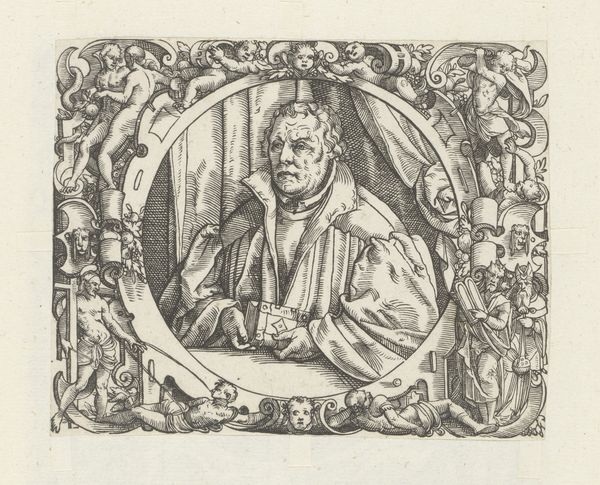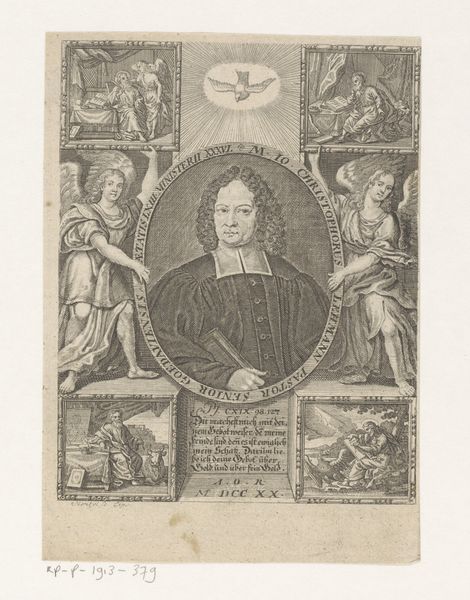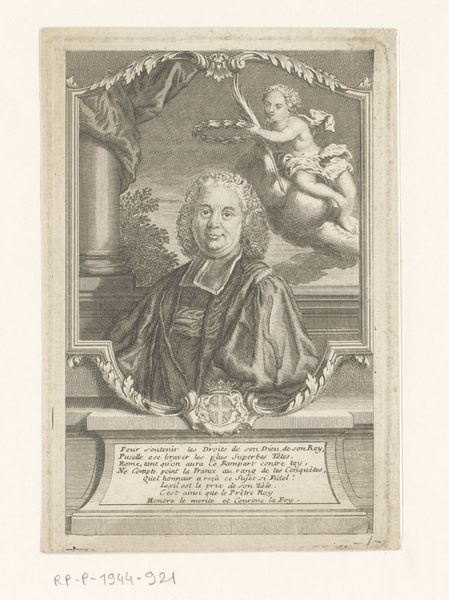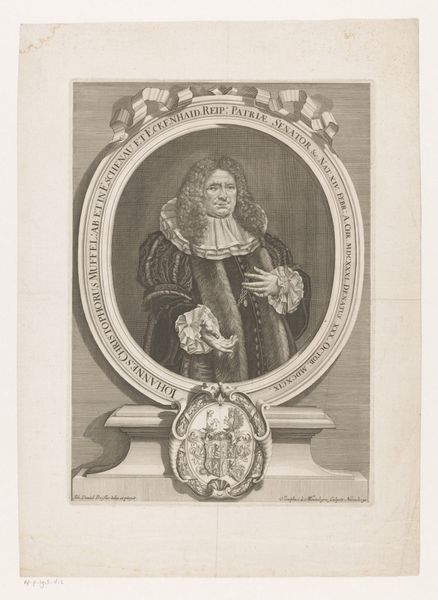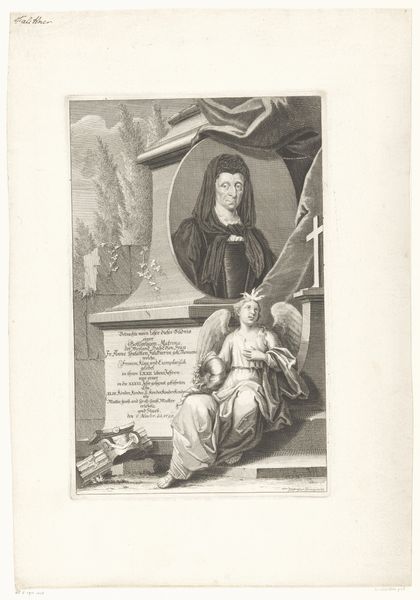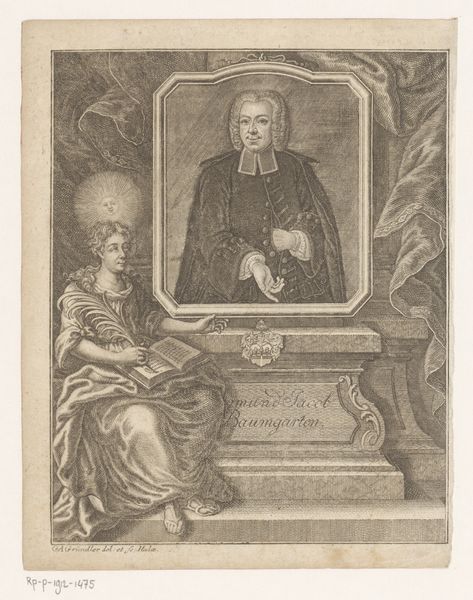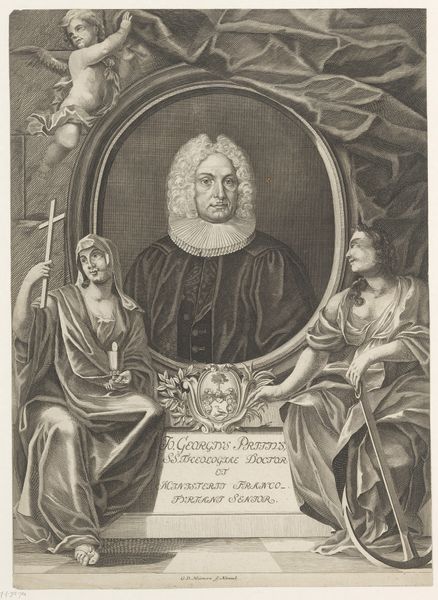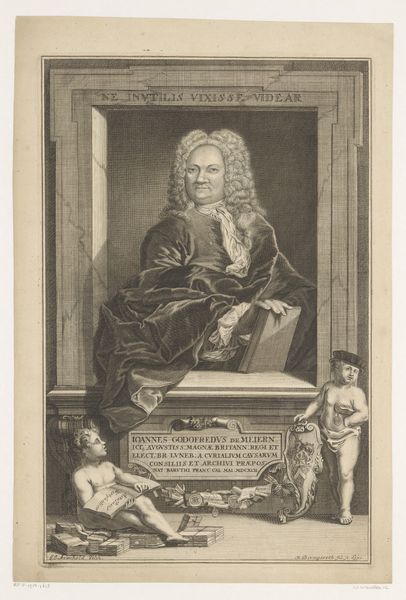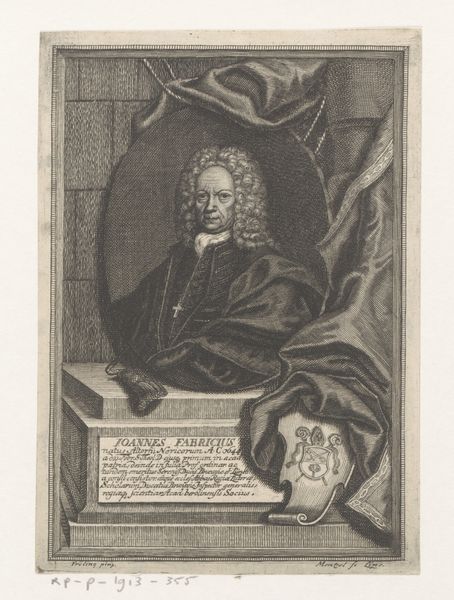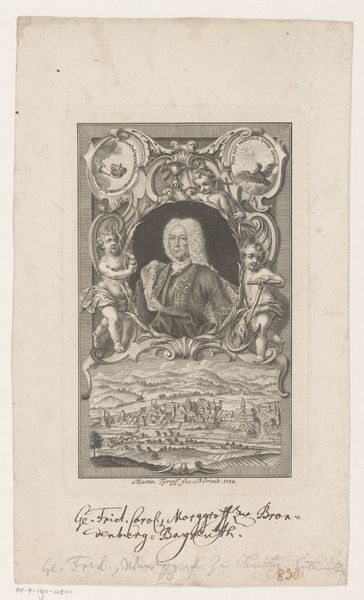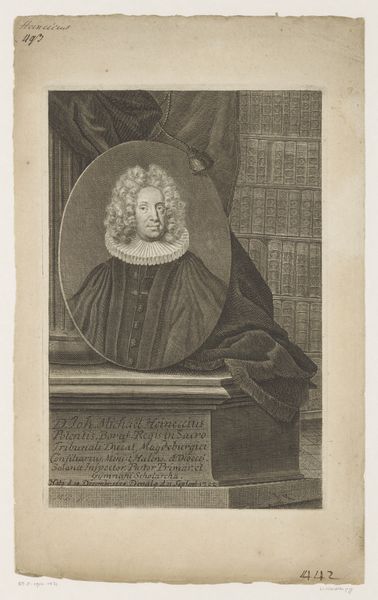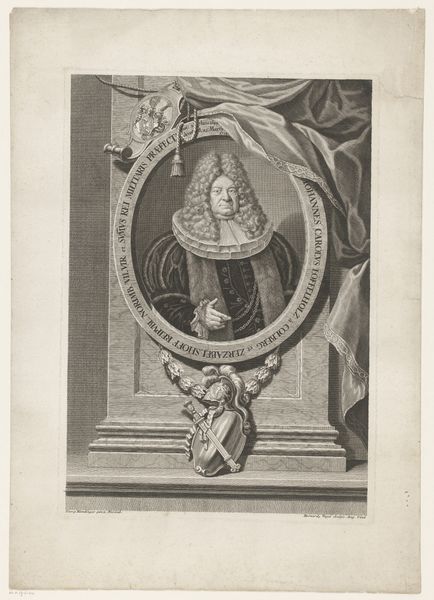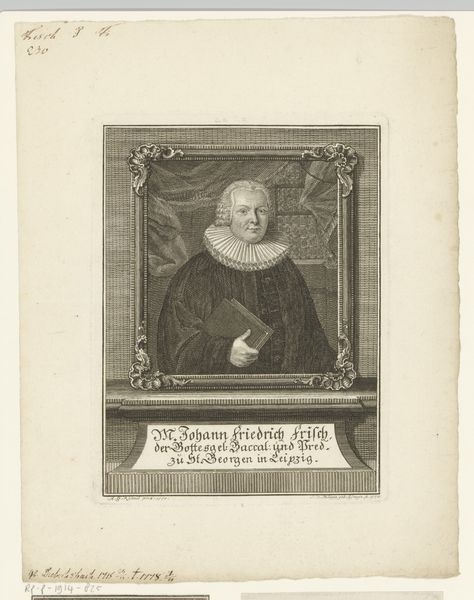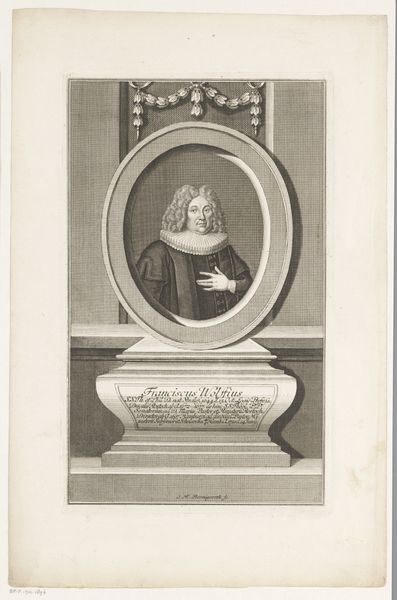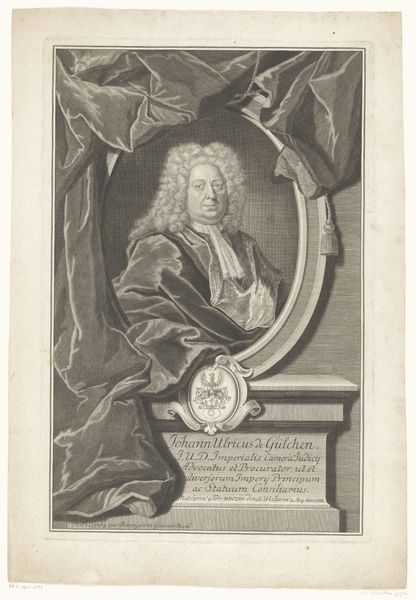
engraving
#
portrait
#
baroque
#
old engraving style
#
history-painting
#
engraving
Dimensions: height 108 mm, width 147 mm
Copyright: Rijks Museum: Open Domain
Editor: This is Johann Georg Mentzel’s "Portret van Martin Luther," an engraving that was produced sometime between 1687 and 1743. It's interesting how Luther's portrait is framed almost like a relic, set amidst classical figures and architecture. What symbols are at play here? Curator: Precisely. Observe how the flanking figures embody contrasting elements: law and grace, perhaps? One clutches a cross, symbol of salvation, while the other has a book. They sit on opposed sides. Note the direction of their gazes; what continuities and discontinuities might those tell us? These aren't merely decorative elements. They invoke a complex theological landscape. Editor: So the contrast highlights different facets of religious life and understanding? The juxtaposition almost feels argumentative, not in a confrontational way, but one encouraging a discourse. Curator: Discourse is at the heart of this piece. Look closer at Luther’s gaze – it’s direct, unwavering. Mentzel deliberately places the books centrally. They act as foundational cornerstones. How do these details alter the initial mood or your interpretation? Editor: The books anchor the composition, suggesting learning and scripture are foundational. It adds depth, showing Luther as not just a reformer but a scholar. His stare conveys strength and intellect, furthering the importance of what he's achieved. Curator: A memory made visual and given physical form. Engravings, as replicable objects, democratized knowledge and images. Consider then the potency of imbuing Luther with these potent visual signifiers – how this image might have moved hearts and minds during a time of both devotion and reform. Editor: I hadn’t considered the role of engravings in spreading ideas and images. Seeing Luther as more than a historical figure but a symbol reproduced and circulated widely really changes my perspective. Curator: Exactly, it allows us to reflect on cultural memory and how visual symbols continuously inform, and even shape, history.
Comments
No comments
Be the first to comment and join the conversation on the ultimate creative platform.
